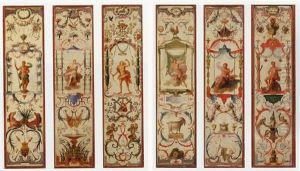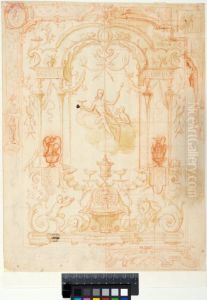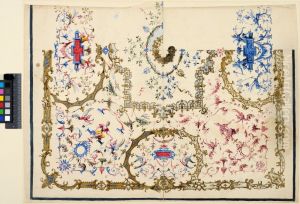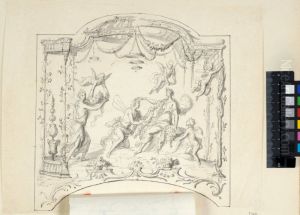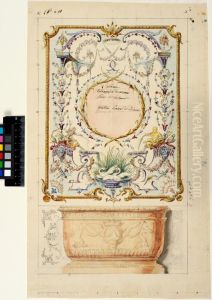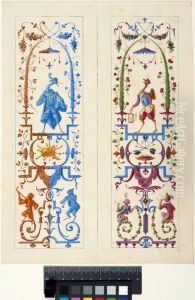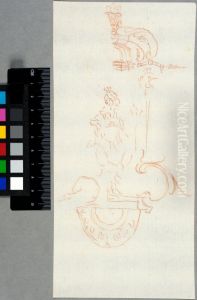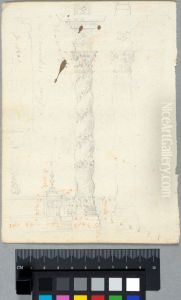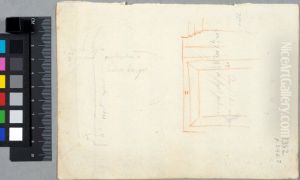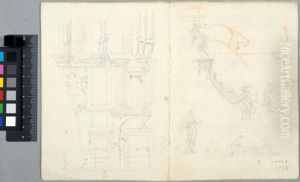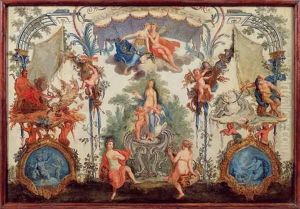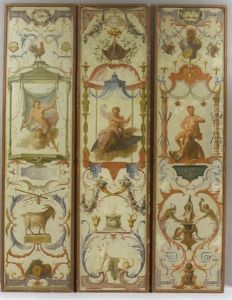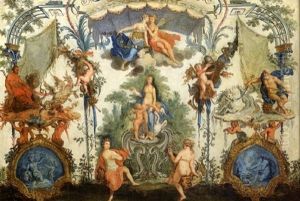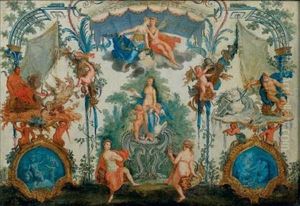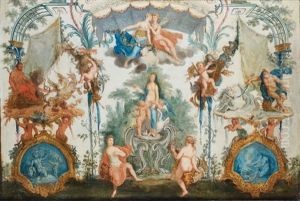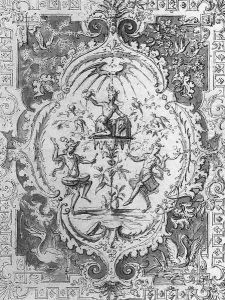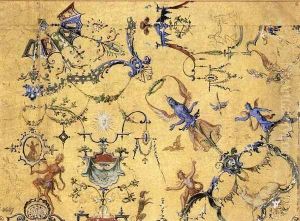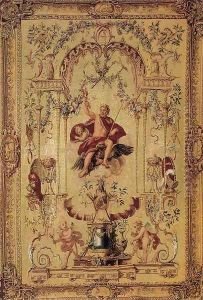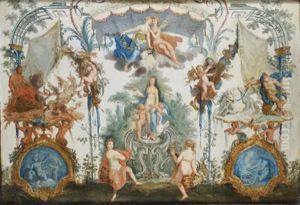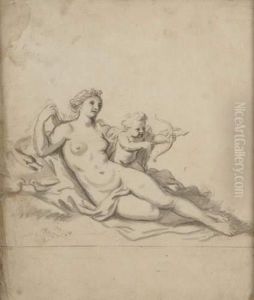Claude III Audran Paintings
Claude III Audran, born in 1658, was a prominent French artist known for his significant contributions to the Rococo style, which was characterized by its elaborate and ornate qualities, lightness, and grace. He came from a family with a strong artistic pedigree; his father, Claude Audran II, was also a painter, ensuring that Claude III was immersed in the world of art from a young age. Despite the shadow of his father's reputation, Claude III managed to carve out his own distinct identity in the art world, becoming one of the most sought-after decorators and designers of his time.
Audran's work was primarily focused on interior decoration and he was particularly famed for his skill as an ornamental designer. He held the prestigious position of 'keeper of the Luxembourg Palace', which allowed him to influence the artistic direction of the palace's interiors significantly. His designs often featured motifs inspired by nature, including flowers, fruits, and birds, rendered with a delicacy and lightness that became synonymous with the Rococo movement.
One of Audran's most notable contributions was his development of the 'Arabesque' style in France. This style was characterized by intricate patterns and elaborate designs that drew inspiration from the art of the Near East. These designs were not just limited to wall decorations but were also featured on furniture, tapestries, and other decorative objects, reflecting the era's fascination with exoticism and the ornate.
Despite his success, Claude III Audran's work was, in part, overshadowed by the later developments in the Rococo style and the eventual shift towards Neoclassicism. However, his influence on the decorative arts and interior design of his time remains undeniable. His legacy is preserved in the various palaces and buildings across France where his work can still be admired. Claude III Audran passed away in 1734, leaving behind a body of work that continues to be studied and appreciated for its beauty and historical significance.
